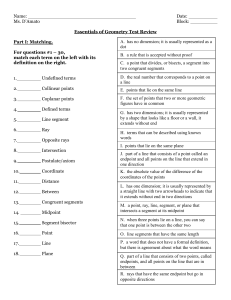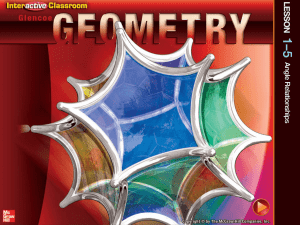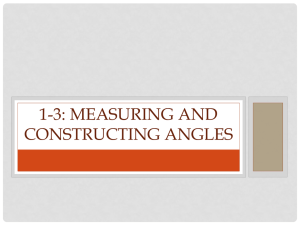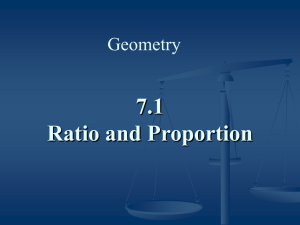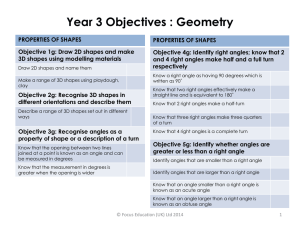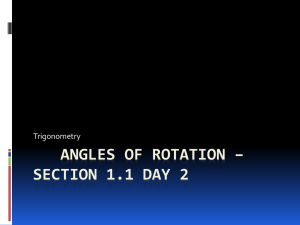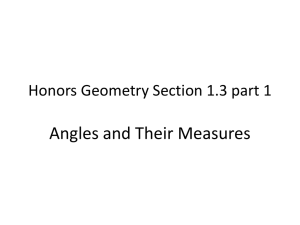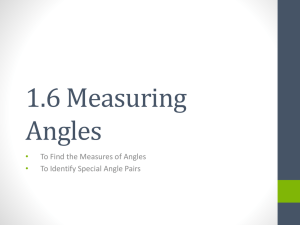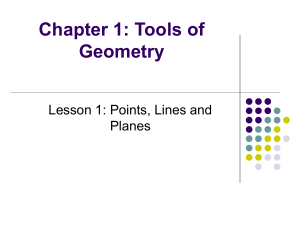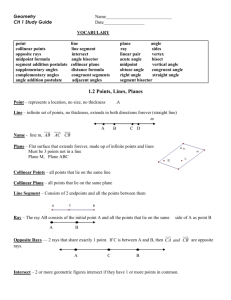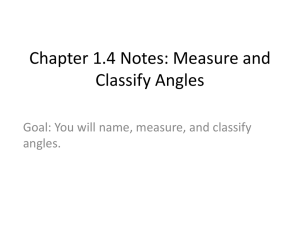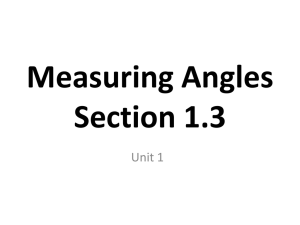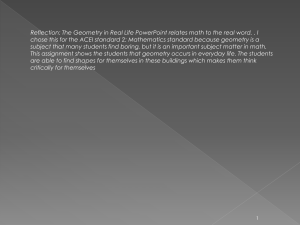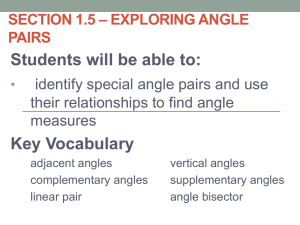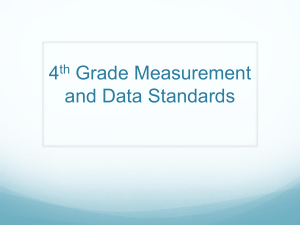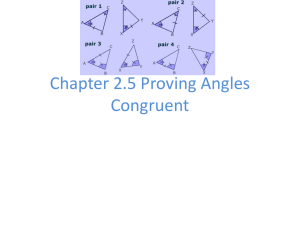File
advertisement
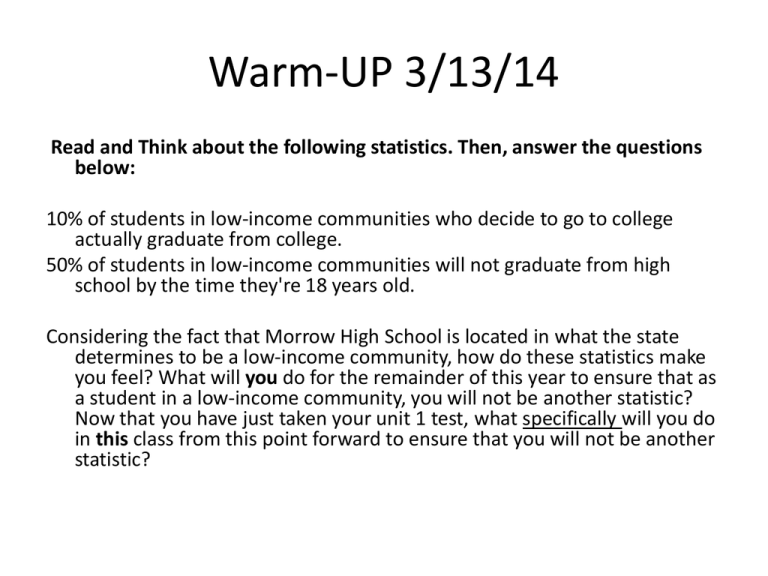
Warm-UP 3/13/14 Read and Think about the following statistics. Then, answer the questions below: 10% of students in low-income communities who decide to go to college actually graduate from college. 50% of students in low-income communities will not graduate from high school by the time they're 18 years old. Considering the fact that Morrow High School is located in what the state determines to be a low-income community, how do these statistics make you feel? What will you do for the remainder of this year to ensure that as a student in a low-income community, you will not be another statistic? Now that you have just taken your unit 1 test, what specifically will you do in this class from this point forward to ensure that you will not be another statistic? Agenda • Review Do Now • Vocabulary • Activity Standard • MCC9-12.G.CO.1 Know precise definitions of angle, circle, perpendicular line, parallel line, and line segment, based on the undefined notions of point, line, distance along a line, and distance around a circular arc. Students Will Be Able to… • Define angle, circle, perpendicular line, parallel line, and line segment. • Understand the concept of point, line, and distance along a line and around a circular arc. Point An exact position or location in a given plane. Is represented by a dot and named with a capital letter. Point A or Point B Line The set of points between points P and Q in a plane and the infinite number of points that continue beyond the points. Written as P Q Q P Line Segment A line with two endpoints. Written as A B Collinear • Points are said to be collinear if they lie on a single straight line. P1, P2, and P3 would be said to be collinear. Ray A line that has one endpoint and continues on forever in the opposite direction. Circle • The set of points on a plane at a certain distance, or radius, from a single point, the center Angle Made up of 2 rays joined together at a common point called a vertex. The angle is ABC Perpendicular Line Two lines that intersect at a right angle (90°). Written as A B P Q Parallel Line Lines in a plane that either do not share any points and never intersect, or share all points. Written as A B P Q A B P Q Distance along a line The linear distance between two points on a given line. How far apart are the points on the line segment? How far apart are the points on the line segment? Hmmm… Degrees The unit of measure for angles. Acute Angle An angle measuring less than 90° but greater than 0°. Right Angle An angle that measures 90°. Obtuse Angle An angle measuring greater than 90° but less than 180°. Straight Angle An angle measuring exactly 180°. Adjacent Angles Two angles that share a common vertex and side. SIDE BY SIDE Vertical Angles Two angles directly across from each other. They share a common vertex. e h f g Linear Pair Two adjacent angles that form a straight line. 1 2 Complementary Angles Two angles that add up to 90 degrees. 3 0 6 0 1 2 Supplementary Angles Two angles that add up to 180°. 1 2 0 1 6 0 2 Guided Practice: Check out the “Radical Rick’s Speedway” Logo and do the following… (10 minutes) • Identify a line in the submitted logo. • Identify a ray in the submitted logo. • Identify a line segment in the submitted logo. • Identify 2 pairs of parallel lines in the submitted logo. • Identify 1 pair of perpendicular lines in the submitted logo. Independent Practice: Design Your Own Logo • It must include the following: – 4 Angles (one obtuse, one acute, one straight, one right) – Circle – Line Segments – Rays – Parallel lines – Perpendicular line • Make sure these pieces are all LABELED. Independent Practice • Worksheet Homework • Finish Independent Practice

